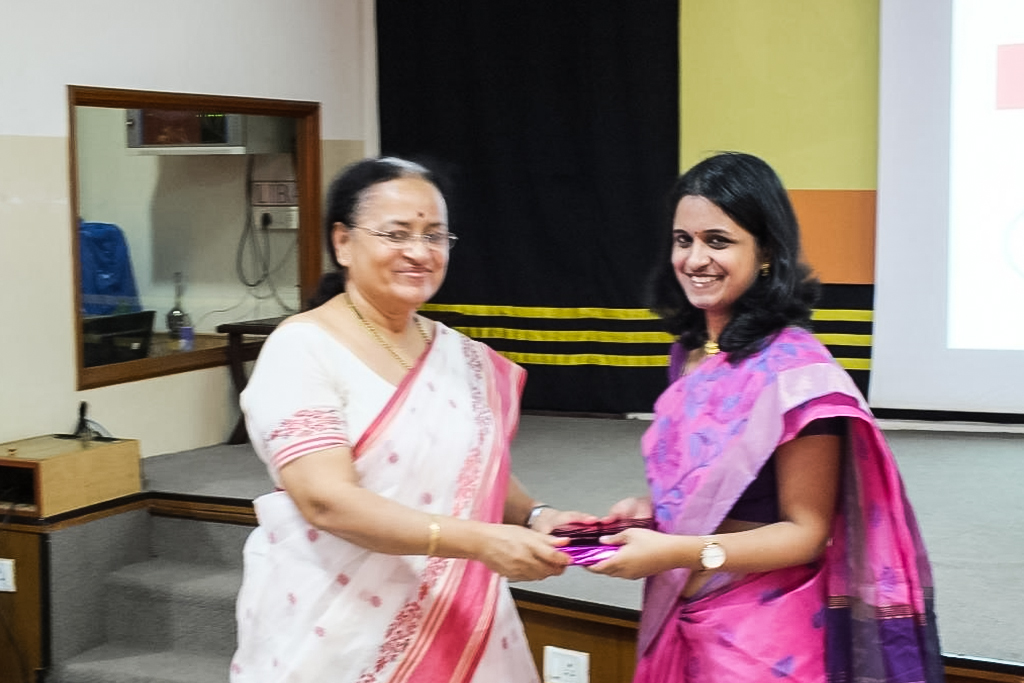BMI 2018 – MS. PREETHI KANDASAMI FREDRICK
Ms. Preethi Kandasami Fredrick, Chartered Accountant and Executive Partner of Kandasami & Associates.
“The secret of getting ahead is getting started” –Mark Twain
17 years, countless meetings and review sessions later, July 1, 2017 witnessed a landmark moment in the economic history of India with the GST or Goods and Services Tax finally being implemented. Over the next 365 days, GST witnessed its fair share of critics, naysayers, and followers and as the curtains came down on its first-year anniversary, the debate has not yet ceased on the effectiveness and issues with the implementation of this tax. Hastily implemented? Lack of infrastructure? Unjustified rate slabs? The professionals of today are in just as much of a quandary as the would-be CAs and finance professionals of tomorrow.
To help tide over some of this confusion and help the upcoming business leaders get a better grasp on the whole idea behind this tax, the Loyola Institute of Business Administration (LIBA), Chennai welcomed Ms. Preethi Kandasami Fredrick, CA and Executive Partner of Kandasami & Associates as part of their Beyond Management Initiative (BMI) session on July 11, 2018. She highlighted the whole idea behind the implementation of GST and also addressed a few queries from the students in this context.
Ms. Kandasami began her talk with the very basics and nitty-gritty of the concept of taxation – direct and indirect taxes – and how it affects various people in the supply chain. She went on to mention how GST – an indirect tax – had been formulated to reduce the net burden on taxpayers by clubbing a number of previously existent taxes together into a single bracket. Illustrations showcased this point, comparing the effective tax rate applicable on a product before and after GST came into the picture. While on face value it may seem like the government is actually losing out on massive tax revenues with this new tax coming in, what is worth noting here is that GST covers an extended taxpaying population which is expected to offset this initial loss. Also, the rates have been optimized so better compliance is expected from the population.
What, How, Who, Where, and Why – These were the basic aspects of the Goods and Services Tax that Ms. Kandasami shed light upon during her interaction with the students. She also mentioned the conditions and prerequisites that allowed certain businesses to claim exemptions under various headers. While on one hand tax compliance is expected to improve and result in lesser tax burden on costs of goods and in the end the consumer, the process of filing returns has taken on a rather complicated picture with the only saving grace being that it is all an e-filing system. Over time, it can be expected, that the minor chinks and finer details will be ironed out to make it a seamless tax compliance system that will benefit the Indian business community.
A separate window was also provided to the students for putting forward their questions to Ms. Kandasami and she welcomed these queries with eagerness. One of the students rightly put forward the fact that input tax credit was also available in the pre-GST era, so how GST was being introduced with input tax credit as a prime feature? To this, she said that the previous system only considered the manufacturers and service providers for the input tax credit while the trader was left to pay taxes. With GST, the entire supply chain becomes eligible for input tax credit.
The inevitable question of whether the government could have done better with their implementation of GST also came up for discussion. Ms. Kandasami said that in her view, strictly, the government had to start somewhere with the implementation of a reform of this magnitude – after all, they had been planning for it for 17 years! It was better to implement it, face hiccups, and fix the glitches, rather than spending another decade or so in trying to get the perfect model out into the system.
Ms. Preethi Kandasami Fredricks is a practicing Chartered Accountant with many years of experience in the industry. During the hours when she is not working, Ms. Kandasami spends her time reading, writing, and following her passion for Western classical music.







